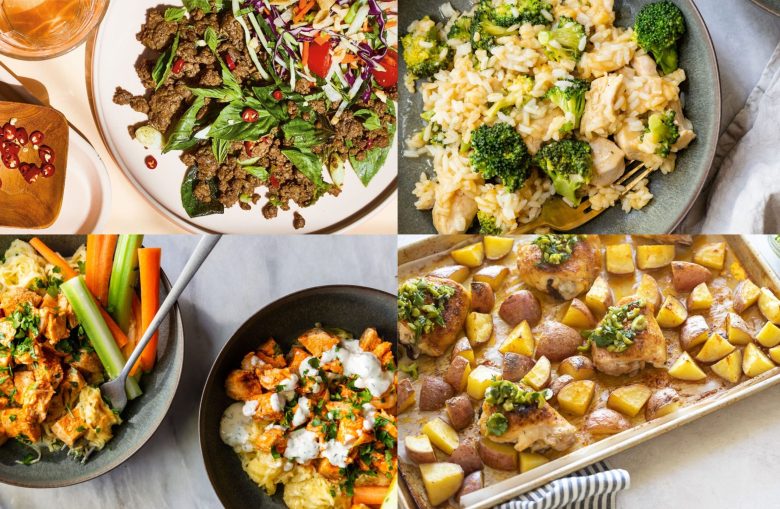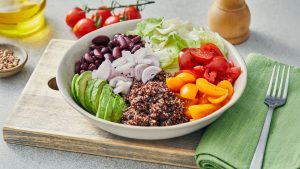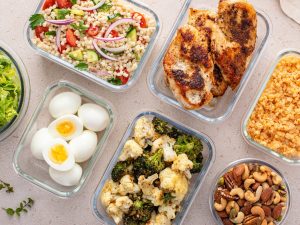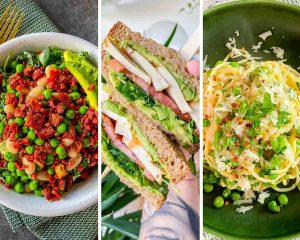Finding meals that the whole family enjoys can be a challenge. Add a gluten intolerance or celiac disease to the mix, and it can feel downright impossible. The good news is that a gluten-free lifestyle doesn’t mean giving up on flavor or family favorites. With a few smart swaps and delicious recipes, you can create meals that everyone at the table will love, whether they need to avoid gluten or not.
This guide is designed to make gluten-free family cooking simple and enjoyable. We’ll walk you through everything from understanding gluten intolerance to stocking your pantry and whipping up kid-approved dishes. You’ll discover that gluten-free eating can be a delicious adventure for the entire family, full of new flavors and wholesome ingredients. Get ready to transform your mealtime and bring joy back to the dinner table.
Understanding Gluten and Its Effects
Before diving into recipes, it’s helpful to understand what gluten is and why it can be problematic for some people. Gluten is a protein found in wheat, barley, and rye. It acts like a glue, giving bread its chewy texture and helping baked goods hold their shape.
For individuals with celiac disease, an autoimmune disorder, consuming gluten triggers an immune response that damages the small intestine. This can lead to serious health complications if left unmanaged. Others may have non-celiac gluten sensitivity, which can cause uncomfortable symptoms without the intestinal damage seen in celiac disease.
Common symptoms of gluten intolerance include:
- Digestive issues like bloating, gas, diarrhea, or constipation
- Headaches and “brain fog”
- Fatigue and low energy levels
- Skin problems, such as rashes or eczema
- Joint and muscle pain
If you suspect someone in your family has a gluten sensitivity, it’s always best to consult with a healthcare professional for a proper diagnosis.
The Benefits of Going Gluten-Free
For those who are sensitive, removing gluten from their diet can lead to significant health improvements. One of the most immediate benefits is improved digestion. Without the inflammatory effects of gluten, the gut can begin to heal, leading to less bloating and discomfort.
Many people also report a noticeable boost in energy levels. When your body is no longer fighting inflammation caused by gluten, it can redirect that energy toward other functions, helping you feel more vibrant and alert. Over time, a gluten-free diet can also lead to clearer skin, fewer headaches, and an overall sense of well-being.
Easy Gluten-Free Swaps for Your Pantry
Transitioning to gluten-free cooking is easier when you have the right ingredients on hand. Fortunately, there are many simple swaps you can make.
- Flour: Instead of wheat flour, use a gluten-free all-purpose flour blend for baking. For other recipes, try almond flour, coconut flour, or oat flour.
- Pasta: Swap traditional wheat pasta for varieties made from rice, corn, quinoa, or lentils.
- Bread: Look for gluten-free bread, wraps, and pizza bases at your local grocery store.
- Soy Sauce: Most soy sauce contains wheat. Use tamari or coconut aminos as a gluten-free alternative.
- Oats: While naturally gluten-free, oats are often cross-contaminated with wheat. Always choose certified gluten-free oats.
- Thickeners: Use cornstarch or arrowroot powder instead of wheat flour to thicken sauces and gravies.
Family-Friendly Gluten-Free Meal Ideas
Here are some crowd-pleasing meal ideas that are naturally gluten-free or can be easily adapted.
Breakfast
- Scrambled Eggs and Veggies: A classic for a reason. Serve with a side of fruit and gluten-free toast.
- Smoothie Bowls: Blend frozen bananas, berries, and a splash of milk. Top with gluten-free granola, seeds, and fresh fruit.
- Pancakes: Use a gluten-free pancake mix or make your own batter with almond or oat flour.
Lunch
- Taco Salad: Layer seasoned ground meat, lettuce, tomatoes, cheese, and crushed gluten-free tortilla chips. Top with salsa and avocado.
- Quesadillas: Use corn or gluten-free tortillas and fill with cheese, beans, and leftover chicken.
- Chicken Salad Lettuce Wraps: Mix shredded chicken with mayonnaise, celery, and grapes. Serve in crisp lettuce cups instead of bread.
Dinner
- Gluten-Free Pizza: Start with a pre-made gluten-free crust or make your own. Let everyone add their favorite toppings for a fun, interactive meal.
- Pasta Night: Cook your favorite gluten-free pasta and top it with a simple marinara sauce, meatballs, or a creamy alfredo.
- Sheet Pan Lemon Herb Chicken: Toss chicken pieces and chopped vegetables (like broccoli, potatoes, and carrots) with olive oil, lemon juice, and herbs. Roast on a single sheet pan for easy cleanup.
Baking Delicious Gluten-Free Treats
You don’t have to miss out on dessert. With the right techniques, gluten-free baking can be just as delicious.
- Use Quality Flour Blends: For the best results in cakes, cookies, and muffins, use a high-quality gluten-free all-purpose flour that contains xanthan gum. This helps mimic the structure that gluten provides.
- Don’t Overmix: Overmixing can make your baked goods tough. Mix the batter just until the ingredients are combined.
- Let It Rest: Allowing gluten-free batter to rest for 15-30 minutes before baking helps the flour absorb moisture, resulting in a better texture.
Try a simple recipe for gluten-free chocolate chip cookies using a 1:1 gluten-free flour blend. You might be surprised that no one can tell the difference!
Tips for a Gluten-Free Lifestyle
- Read Labels Carefully: Gluten can hide in unexpected places like sauces, soups, and even medications. Look for “certified gluten-free” labels for peace of mind.
- Shop Smart: Many stores now have dedicated gluten-free sections. Shopping the perimeter of the store—where fresh produce, meat, and dairy are located—is also a great strategy.
- Plan for Eating Out: When dining out, check menus online beforehand or call the restaurant to ask about their gluten-free options. Many restaurants are happy to accommodate dietary needs.
Frequently Asked Questions
Is a gluten-free diet healthy for everyone in the family?
A well-balanced gluten-free diet focusing on whole foods like fruits, vegetables, lean proteins, and healthy fats is healthy for everyone. However, there is no medical reason for someone without a gluten sensitivity to avoid it. Many processed gluten-free products can be high in sugar and low in nutrients, so it’s important to focus on whole foods.
Will my kids notice a difference in taste?
With today’s high-quality gluten-free products, many family members won’t even notice a change. Involving kids in cooking and trying new recipes can also make the transition more exciting for them.
Is cooking gluten-free more expensive?
While some specialty gluten-free products can be pricier, basing your meals on naturally gluten-free foods like rice, potatoes, vegetables, and meat can be very budget-friendly.
Embrace Your Gluten-Free Kitchen
Switching to gluten-free cooking for your family doesn’t have to be a restrictive or complicated process. By focusing on delicious, whole foods and embracing simple swaps, you can create a kitchen environment where everyone can eat safely and happily. A gluten-free lifestyle is an opportunity to explore new ingredients and recipes, bringing your family together over healthy and flavorful meals.




